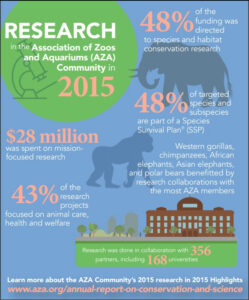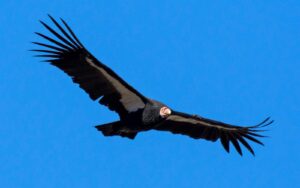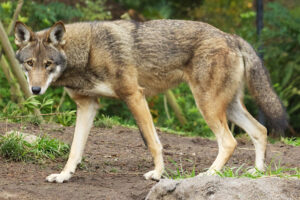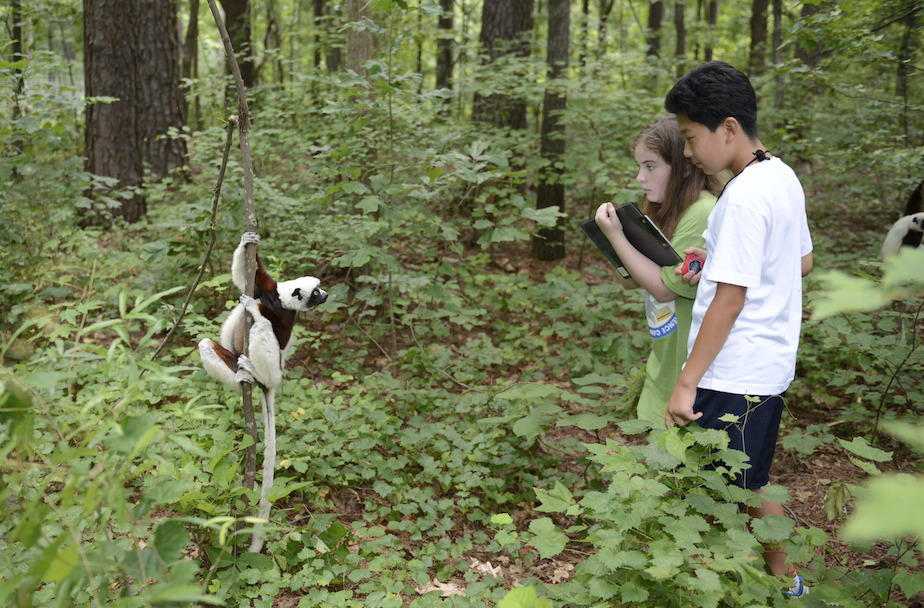Zoos and Conservation
When visiting the Duke Lemur Center, it can be easy—and, often, preferable—to forget that the playful, charismatic lemurs living in the forests of North Carolina are critically endangered in the wilds of Madagascar. This is a common experience when visiting animal care facilities like zoos that house and protect endangered species. With more and more species becoming endangered or threatened each year due to human impact, zoos and organizations like the Duke Lemur Center are some of the few places where people can view and enjoy wildlife, and many of these places are contributing the conservation of species in a big way.

A female blue-eyed black lemur enjoys fresh leaves at the DLC. Blue-eyed black lemurs are critically endangered in the wild.
Not all zoos and animal care centers are created equally. While many organizations that house wildlife are doing great work to care for and preserve the species in their care, there are just as many that are not involved in conservation work or may even detract from positive efforts by allowing inappropriate animal interactions or promoting incorrect information about the wildlife in their care. It’s always important to do research before choosing to support an animal care facility. One helpful indicator of a conservation-based animal care program is whether the organization has AZA accreditation or is part of the Species Survival Plan.

Source: AZA.org
The AZA is the Association of Zoos and Aquariums, and accreditation by this organization requires certain standards of animal welfare, care, and management, among other requirements. The AZA also runs the Species Survival Plan, a conservation breeding program that focuses on saving endangered species. Many AZA zoos are actively involved in research and conservation efforts to protect the species in their care, and often generate funding for conservation initiatives. Some organizations may even work to reintroduce endangered species back into the wild, or act as a genetic safety net for critically endangered wildlife.
Conservation is hard work, and it takes a while to see the results of long-term change. While there is plenty of work that still needs to be done, zoos and other animal centers have already seen lots of great success in conservation. Some famous examples of species brought back from the edge of extinction include the California condor, the black-footed ferret, and the red wolf.

A California condor flies in a blue sky.
The California condor serves as an excellent representative of the impact that protective measures can have on an endangered species. The first species to be listed under the Endangered Species Act in 1967, California condors were near extinction when the San Diego Zoo began breeding them in captivity. By the 1980s, California condors were extinct in the wild, but years of successful breeding in California zoos allowed the population to increase, eventually resulting in over 488 condors released into the wild as of 2018. Black-footed ferrets were similarly brought into zoo breeding programs in the 1980s and were declared extinct in the wild until reintroductions brought their wild population up to over 2,000 as of 2011.

A black-footed ferret on bare ground.

A red wolf walks through the forest.
A once-neighbor of North Carolinians, the red wolf went extinct in the wild in the 1980s, and ongoing efforts to breed and reintroduce these critically endangered canines are still a major goal of local wildlife centers. While wild populations climbed to 120 in 2012, a wave of human-caused mortality brought the population back down to only 18 in the past few years. With perseverance from NC zoos and wildlife centers, red wolves will hopefully sustain their native stomping grounds.
In addition to the on-the-ground conservation work being done by zoos and other organizations across the country, the power of awareness drives a great deal of the changes that we see on a broader level. Because visitors to these institutions have an innate love of and curiosity for wild creatures, zoos foster awareness and action by providing educational opportunities, inspiring action, and bringing in funding for endangered species. Public engagement in conservation work can be extremely impactful, especially when it comes to individual actions like voting on local legislation.

Summer campers observe the behavior of a Coquerel’s sifaka at the Duke Lemur Center.
Earth Day can be a difficult reminder of the damage that humans have done to the planet. But at the same time, this day presents an opportunity to celebrate all of the amazing work being done by people around the world to protect our world and the things that live on it. Supporting and respecting those efforts can be as simple as a visit to an accredited zoo, a hike in a state park, or just taking a moment to think about all of the things you appreciate about our environment.
Sources:
Andrew Tribe Senior Lecturer & Rosemary Booth (2003) Assessing the Role of Zoos in Wildlife Conservation, Human Dimensions of Wildlife, 8:1, 65-74, DOI: 10.1080/10871200390180163
Brichieri-Colombi, T.A., Lloyd, N.A., McPherson, J.M. and Moehrenschlager, A. (2019), Limited contributions of released animals from zoos to North American conservation translocations. Conservation Biology, 33: 33-39. https://doi.org/10.1111/cobi.13160
Sampaio, M. B., Schiel, N., & Souto, A. da S. (2020). From exploitation to conservation: a historical analysis of zoos and their functions in human societies. Ethnobiology and Conservation, 9. https://doi.org/10.15451/ec2020-01-9.02-1-32
https://www.fws.gov/project/red-wolf-recovery
https://animals.sandiegozoo.org/animals/california-condor
https://nationalzoo.si.edu/animals/black-footed-ferret

